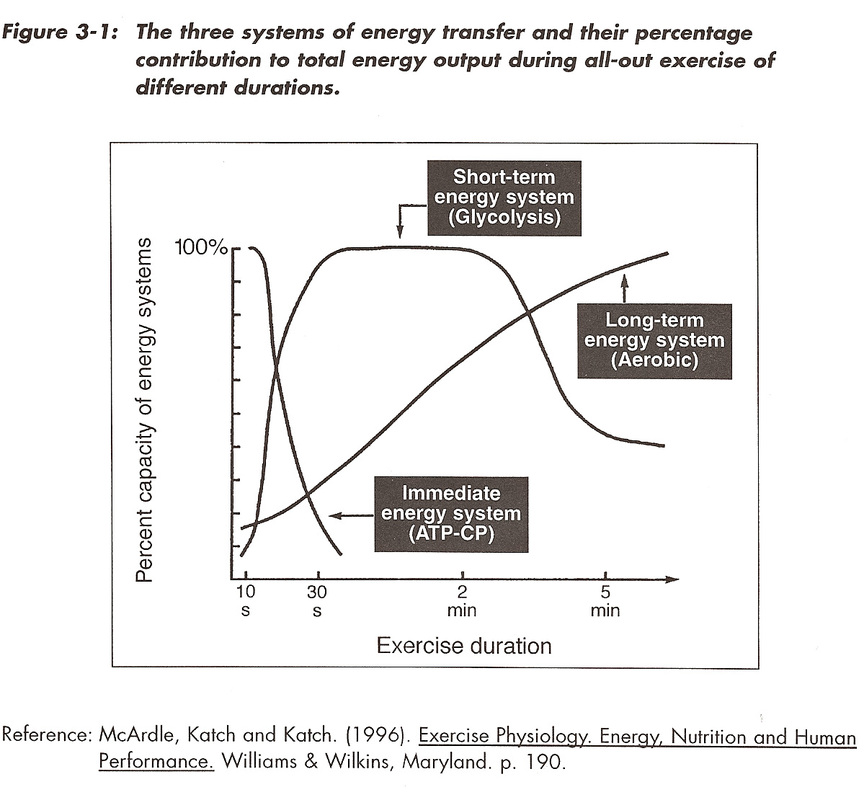|
In my previous post on using the energy systems in your indoor cycling class, I discussed the aerobic energy system and provided a drill that would challenge your participants’ aerobic power. Now continuing down the list of energy systems most used in spin, the focus shifts to the first of the two anaerobic, or short duration, energy systems. This post will focus on the anaerobic lactic (also called glycolytic) system.
Here’s a quick refresher on the energy system and how we should focus our drills to use it effectively. The anaerobic energy systems are the systems in which oxygen is not required to make energy. They are what fuels our initial movements when we start exercising and they are what work extensively at high intensities. The anaerobic lactic energy system, specifically, is able to generate small amounts of ATP but is also relatively faster at making energy compared to the aerobic energy system. This also holds true for the anaerobic alactic system, the quickest system, which will be the focus of the third and final post on this topic. As stated in my previous post, it takes the aerobic system time to generate energy and so the body uses anaerobic glycolysis to make energy within the first couple minutes of exercise. Put more simply, instead of using oxygen within the cells to generate energy, it is able to produce ATP via a cascade of chemical reactions. The problem with this energy system is the by-product it produces, namely lactic acid, which breaks down into excess hydrogen ions and increases the acidity of the working muscle cells. Why is that a problem? Well, increased acidity causes stimulation of the nerve endings causing pain, decreased muscle contraction and fatigue. Performance suffers! Kind of like hitting a brick wall! When these by-products are accumulating in the body, the tipping point for a lack of a better word is called anaerobic threshold (also closely related and referred to in the literature as lactate threshold and/or ventilator threshold). Without going through the gory details, it is sufficient to say that by training close this anaerobic threshold, we can improve our performance. So how do we apply our knowledge of the anaerobic lactic energy system and anaerobic threshold to our drills? Well, let’s look at the appropriate work to rest ratio, the time it takes our bodies to recovery from anaerobic work. For anaerobic lactic work, we must design sessions with the ratio 1:2 to allow the muscles to recovery and remove (as much as they can) the nasty by-products. Typically, this energy system kicks in at around 15 seconds out to about 120 seconds. Power drills work very well with the anaerobic lactic energy system. By incorporating multiple groups in the drill, you can build in the appropriate recovery for each participant. Let’s take a look on how to set this up.
5 Comments
As we start back to classes this Fall, this video not only gives me a giddy belly laugh but it also reinforces how as indoor cycling leaders, we need to expect the unexpected in our classes!
I can’t say I ever had an extreme a case as Dwight but I have had some opinionated participants. As leaders, how do we handle these participants? Are they providing friendly, non-threatening suggestions and enthusiasm or are they trying to sabotage your class? It’s those individuals who are positively engaging with you and others in class that you need to take a second look at! In some cases, I think these types of eager participants want to actually be leaders themselves. How do you identify, encourage and foster a new leader? Can you think of a potential new leader? And don’t feel intimidated to suggest they get certified. If I’ve learned anything over ten plus years in this role, is that there are always way more people wanting to get moving than there are leaders and we need each and everyone we can get to lead group exercise. When you’ve found a promising candidate don’t feel intimidated to suggest they get certified. Who knows? Maybe one day they would be a great sub for your class! As a certified leader, is it not also our role to promote our certifications? I challenge you to find at least one participant this session/term to encourage to become certified, but don’t stop there, act as their mentor! The next time a Dwight arrives in our class we embrace him/her and see what he/she can bring to the role of an indoor cycling leader. Let me know when you find your mentee and how it goes! If they are looking to get certified with the AFLCA, I’m facilitating the cycle designation on October 20, 2012 and would love to have them attend! Enjoy the first couple weeks back in the saddle! |
Workman's Cycle Drills & Skills
Enjoy some of my favorite cycle workout drills either in a cycle class or on your own bike at home! Archives
September 2013
Categories
All
|
Edmonton, Alberta

 RSS Feed
RSS Feed